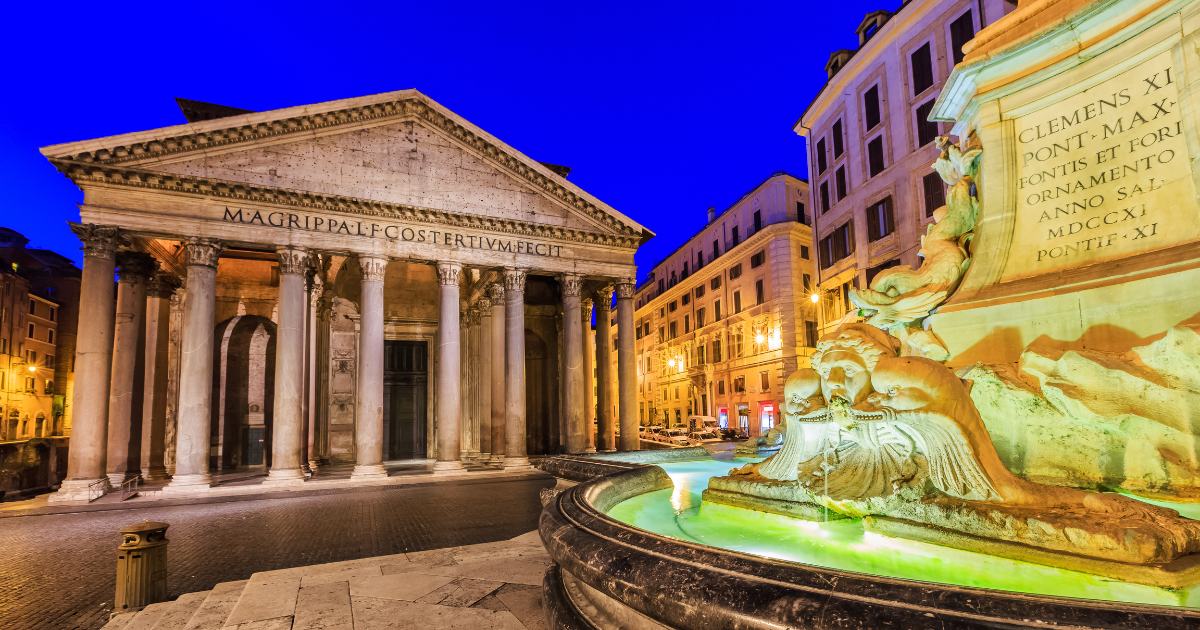As one of Rome’s most visited monuments, the Pantheon faces the constant challenge of balancing tourism with preservation. Sustainable tourism practices are crucial to ensure that this architectural marvel continues to inspire future generations. This article explores the efforts being made to protect the Pantheon and how visitors can contribute to its conservation.
The Challenge of Mass Tourism
Visitor Impact
- The Pantheon receives millions of visitors annually, putting significant stress on the ancient structure.
- Foot traffic, touch, and even breath moisture can contribute to wear and degradation over time.
Environmental Concerns
- Increased carbon dioxide levels from visitors’ exhalations can affect the ancient marble and artwork.
- Waste management and energy consumption are ongoing challenges for site managers.
Conservation Efforts
Structural Preservation
- Regular monitoring of the building’s structural integrity.
- Use of non-invasive technologies to detect and address potential issues before they become critical.
Climate Control
- Implementation of subtle climate control measures to mitigate the effects of temperature and humidity fluctuations.
- Special attention to the unique challenges posed by the open oculus.
Restoration Projects
- Ongoing cleaning and restoration of artwork and architectural elements.
- Use of advanced techniques that prioritize reversibility and minimal intervention.
Visitor Management Strategies
Timed Entry Systems
- Introduction of timed entry tickets to manage crowd flow and reduce peak congestion.
- This system helps distribute visitor impact more evenly throughout the day.
Capacity Limits
- Enforcement of maximum capacity limits to prevent overcrowding and ensure visitor safety.
- These limits also help maintain an atmosphere conducive to appreciation and reflection.
Guided Tours
- Promotion of guided tours to enhance visitor education and awareness of conservation needs.
- Guides trained to emphasize responsible tourism practices.
Educational Initiatives
Informative Displays
- Installation of discreet, informative displays that educate visitors about the Pantheon’s history and conservation challenges.
- Use of QR codes to provide additional information without cluttering the historic space.
Digital Resources
- Development of mobile apps and online resources to enhance visitor understanding before and after their visit.
- Virtual tours that allow people to explore the Pantheon remotely, potentially reducing physical visitor pressure.
Sustainable Practices
Energy Efficiency
- Installation of energy-efficient lighting systems that respect the building’s historic character.
- Use of renewable energy sources where possible for operational needs.
Waste Reduction
- Implementation of recycling programs and reduction of single-use plastics on site.
- Encouragement of visitors to bring reusable water bottles.
Local Community Involvement
- Engagement with local communities in conservation efforts and decision-making processes.
- Support for local businesses that align with sustainable tourism goals.
Visitor Responsibilities
Respectful Behavior
- Guidelines for visitors on how to interact with the monument respectfully.
- Emphasis on “leave no trace” principles.
Supporting Conservation
- Opportunities for visitors to contribute directly to conservation efforts through donations or volunteer programs.
- Promotion of responsible souvenir purchasing that supports local artisans and conservation initiatives.
Technology in Conservation
3D Mapping and Modeling
- Use of advanced 3D scanning technology to create detailed models for monitoring and preservation planning.
- These models also serve as valuable research and educational tools.
AI and Big Data
- Application of artificial intelligence to analyze visitor patterns and optimize management strategies.
- Use of big data to predict and mitigate potential conservation issues.
International Cooperation
UNESCO Involvement
- Collaboration with UNESCO and other international bodies to ensure best practices in heritage preservation.
- Participation in global initiatives for sustainable tourism at World Heritage Sites.
Research Partnerships
- Engagement with universities and research institutions worldwide to advance conservation techniques.
- Hosting of international conferences on sustainable heritage tourism.
Future Challenges and Opportunities
Climate Change Adaptation
- Development of long-term strategies to address the potential impacts of climate change on the monument.
- Integration of climate resilience into all aspects of site management.
Balancing Accessibility and Preservation
- Ongoing efforts to make the site accessible to all while minimizing impact.
- Exploration of innovative technologies to enhance visitor experience without compromising conservation.
Conclusion: A Shared Responsibility
Preserving the Pantheon for future generations is not just the task of conservators and site managers—it’s a responsibility shared by every visitor. By embracing sustainable tourism practices, we can ensure that this magnificent testament to human ingenuity continues to inspire and educate for millennia to come.
As you plan your visit to the Pantheon, consider how you can contribute to its preservation. Choose guided tours that emphasize sustainability, respect visitor guidelines, and take the time to truly engage with the site’s rich history and ongoing conservation efforts. Remember, every small action—from properly disposing of waste to sharing your knowledge with others—contributes to the larger goal of sustainable tourism.
The Pantheon has stood for nearly two thousand years, weathering the storms of history. With conscious effort and collective responsibility, we can help it stand for two thousand more, a enduring bridge between our past and our future.


